One advantage of raising ducks is that they are more cold-hardy than chickens. Before ducks can be fully cold-hardy, however, they have to grow to become adults.
Young ducks are not as cold-hardy as older ones, so extra care needs to be given.
How would you know if your ducklings are feeling too cold? Read this article.
How do you tell if your duckling is cold?
Ducklings may be cold when they plop down instead of walking, huddle close together, or have black spots on their feet.
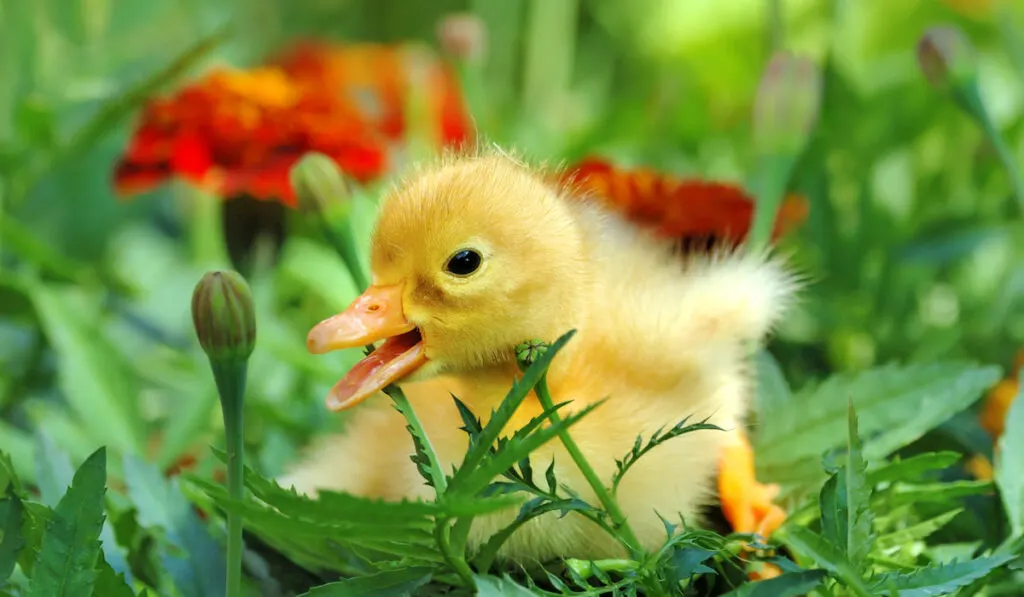
If you see any of these symptoms, or a few others we will discuss below, read on to find out how you can help keep your ducklings from being too cold.
Table of Contents
1. They Plop Down Often
When ducklings are feeling too cold, they will stand or walk less often and just plop down instead.
The reason is that their legs and feet are the most exposed parts of their body since there are no downy feathers down there to keep them warm.
To prevent their legs from getting too cold due to overexposure, your ducklings will try to hold their feet close to their body for warmth. This gives them a halting, or “plopping” gait when they do walk.
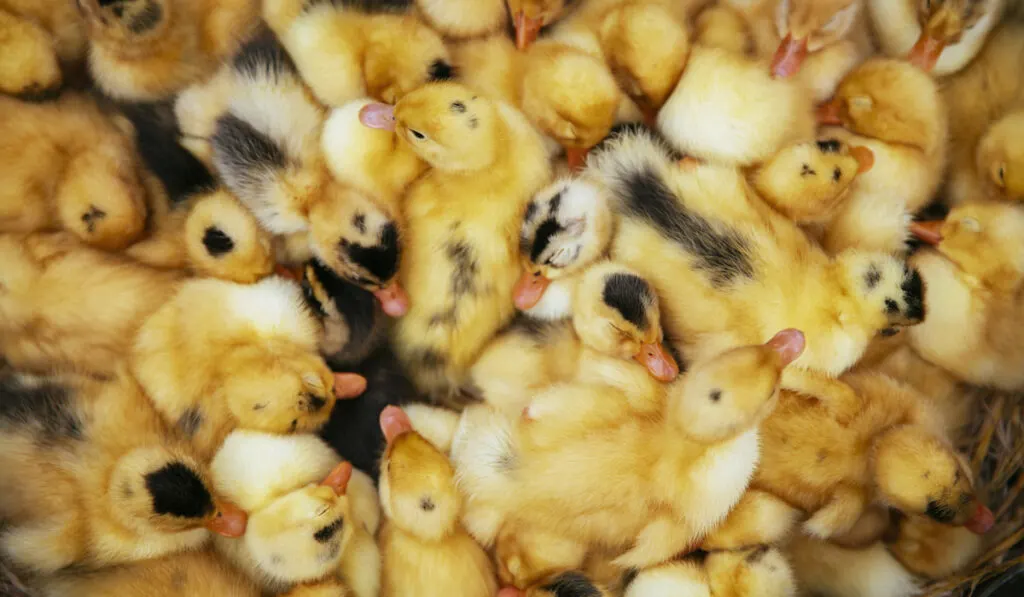
2. They Huddle Close Together
If you notice that your ducklings are getting too close to each other, you should know that they are feeling too cold and need your help.
Cold ducks cluster together while hot ducks spread themselves far apart.
Later in this article, we will discuss how to care for cold ducklings.
3. They Keep Hobbling on Their Feet
As you already know from a previous point, ducklings will try as much as they can to prevent their feet from being overexposed to the cold.
If the ground is too cold, your ducklings will stand on one foot and shift from foot to foot constantly. This usually happens when is there is no insulating bedding on the floor or ground.
4. They Eat More
Feeding and digestion keep birds such as chickens and ducks warm. If they have access to grains such as corn and rye at night, they will be warm while digesting their food.
If you notice that your birds are eating more than usual, especially in winter, know that they are doing so to keep themselves warm.
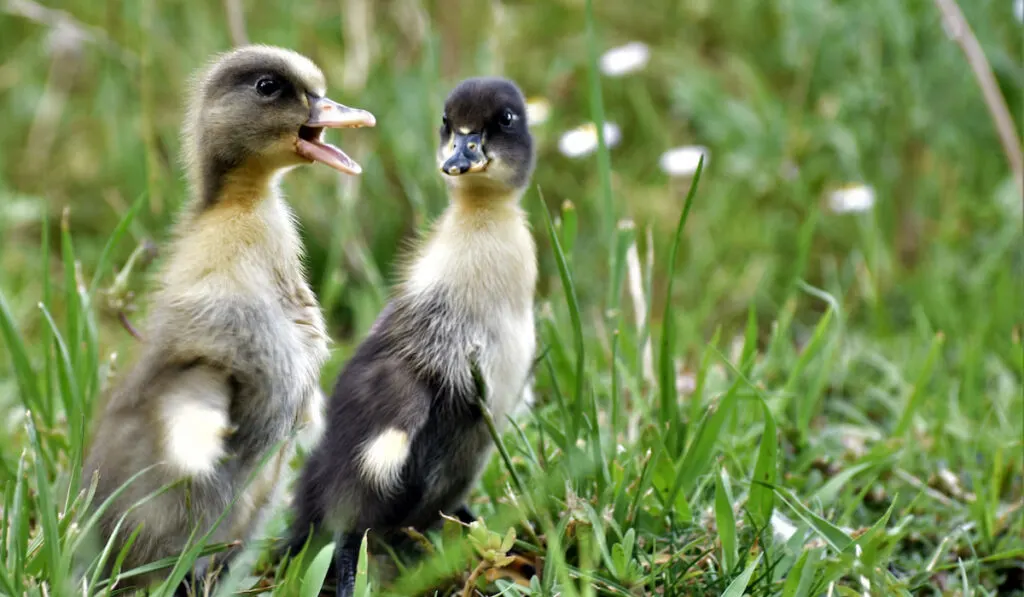
5. They Shiver
This is by far the easiest observable means to identify a cold (or sick) duckling. It is not just easy to identify, it is also an indication that you have to act quickly.
Ducks are more cold-hardy than chickens, so it is uncommon to find ducks and ducklings shivering when they have proper care.
If your ducklings are shivering, it can mean that they are feeling too cold and need your help immediately.
6. Black Spots on Their Feet
If you notice some black spots on the feet of ducklings especially in winter, it could be a sign of frostbite. Your ducklings can have frostbite when it is too cold and when there is improper ventilation in the coop during the winter.
Ducks produce a lot of moisture when they breathe normally, therefore, they need proper ventilation in their coop to mediate the humidity.
If you think that your ducklings have frostbite, take them to the vet immediately.
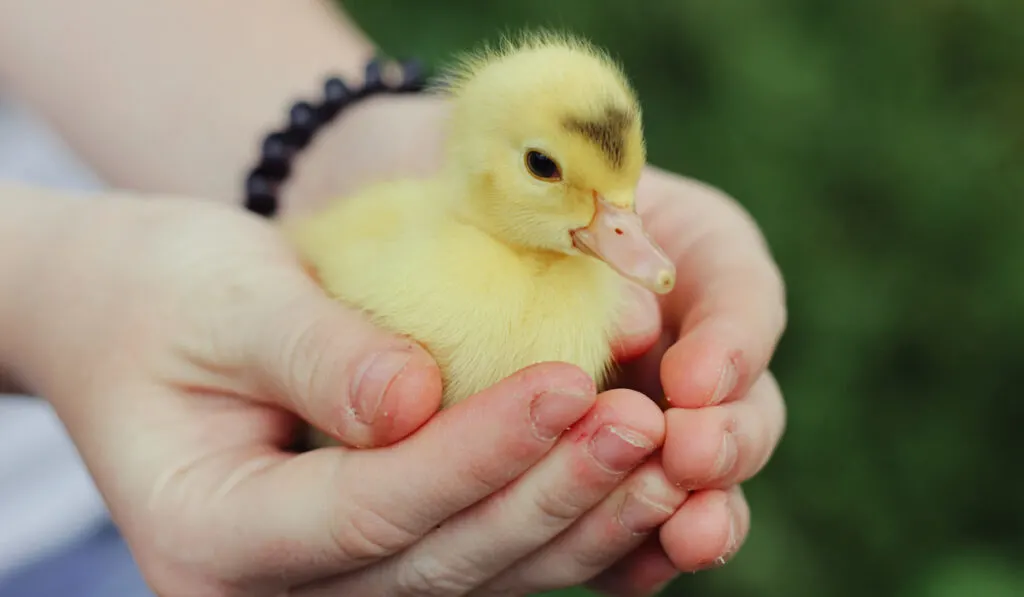
7. They are Motionless
Motionlessness is a sign of hypothermia in ducks and ducklings.
If the atmosphere is cold and you find your ducklings motionless, know that they are feeling extremely cold.
You should bring them inside to a heated area immediately.
Even though ducklings can withstand cold better than chicks, there are times when they need supplemental heat.
Next, we will talk about the best temperatures for ducklings at different stages of growth.
What is the Best Temperature for Ducklings
When caring for ducklings, you have to make sure that you give them the right temperature. The table below shows the temperature requirements of ducklings as they grow:
| Age in days | Temperature Range °F | Temperature Range °C |
|---|---|---|
| 1-3 days | 90-92° | 32-33° |
| 4-7 days | 85-90° | 29-33° |
| 8-14 days | 80-85° | 27-29° |
| 14-21 days | 75-80° | 24-27° |
| 21-28 days | room-75° | room-24° |
(Source)
Make sure that your ducklings have sufficient temperature, but not too much heat. Remember they are tender, so do not expose them to the cold of winter.
How Do You Keep Your Cold Ducklings Warm?
Here are some suggestions to keep your ducklings warm:
1. Provide Heat Lamps
Using heat lamps to keep ducklings warm is the most common method of keeping young poultry and waterfowl warm.
You can buy a large 250-watt heat-emitting lamp, or two smaller heat lamps for your ducklings’ enclosure.
Having two smaller heat lamps can guard against freezing if one stops working at night or when you are not available. The other can then provide some heat to keep your ducks somewhat warm in the interim.
If you don’t want to use heat lamps with your ducklings for any reason, check out our article on raising ducklings without a heat lamp.

2. Insulate the Brooder
You can line the walls of the brooder with insulating materials that prevent cold from reaching your ducklings, such as mylar.
If the brooder is properly insulated, you can reduce the intensity of your heat lamp because more heat will be stored in the brooder.
3. Provide Bedding
Bedding doesn’t just absorb excess moisture from your duckling’s excretory waste; it also prevents them from touching the frigid floor.
You can use materials such as sawdust, wood shavings, and even towels or blankets as bedding in the brooder.
Newspaper can be used as bedding, but is more effective in absorbing moisture from droppings than holding heat.
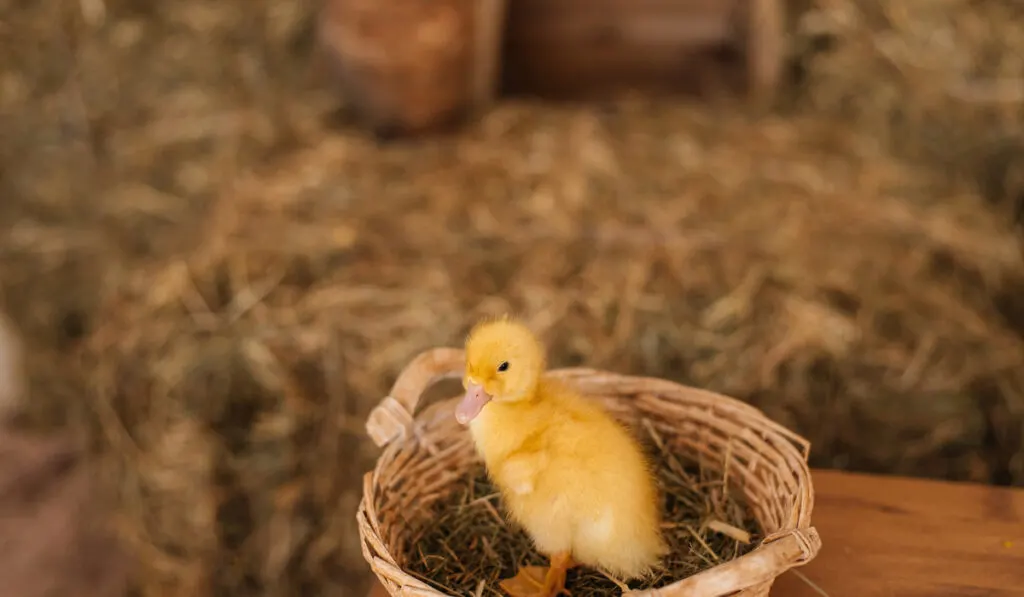
4. More Ducks, More Company
If the brooder gets cold quickly, it could mean that it is too big for your duckling population.
If that is so, you can opt to add more ducklings. Remember that ducklings produce moisture (which brings more heat) when they breathe, so more ducks can keep a brooder warmer. Just make sure that it is properly ventilated.
You should also spend more time with your ducklings. When you spend more time with your ducklings, you can easily identify sick and cold ones. It will also increase your bond with the baby ducks.
Lastly, when you cuddle your ducklings, it keeps them warm.
Final Thoughts
Even though ducks are cold-hardy, your ducklings require different temperatures at different stages of growth and may need some supplemental heat. If your ducklings are cold, they will show some of the signs discussed above.
Just make sure to follow the suggestions in this article to help keep your ducklings warm.
If you’re concerned about your adult ducks, check out this post on how to tell if your duck is cold.
